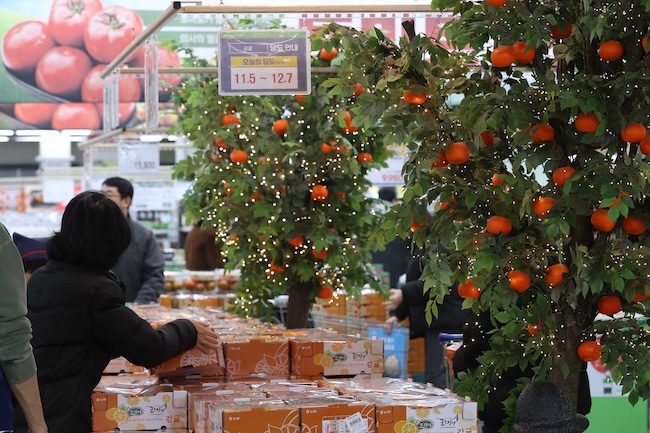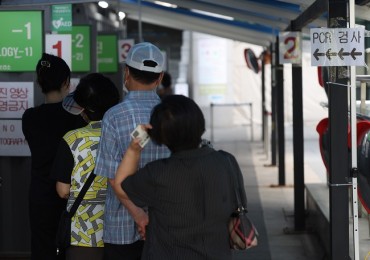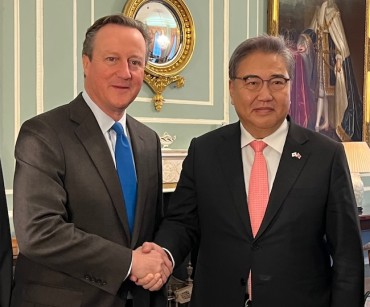SEOUL, Dec. 29 (Korea Bizwire) — South Korea has continued to experience high inflationary pressure this year following the highest price growth in decades the previous year, but inflation in December ticked down for a second consecutive month in signs that price pressure is easing, data showed Friday.
Consumer prices, a key gauge of inflation, rose 3.6 percent on-year in 2023, slowing from a 5.1 percent gain in 2022, according to the Statistics Korea.
Last year’s figure marked the steepest on-year rise since 1998, when consumer inflation surged 7.5 percent in the wake of the Asian financial crisis.
Excluding the 2022 figure, this year’s price growth was the steepest since 2011, when consumer inflation spiked 4 percent.
The 2023 reading was higher than the government’s outlook of a 3.3 percent increase presented in July, though officials later said that inflation was forecast to ease at a slower pace than earlier expected.
Core inflation, which excludes volatile food and energy prices, went up 4 percent on-year in 2023, compared with a 4.1 percent rise in 2022.
Prices of daily necessities — 144 items closely related to people’s everyday lives, such as food, clothing and housing — climbed 3.9 percent on-year this year, staying above the 3 percent level for the third year in a row.
This year’s price increase was due mainly to high prices of energy and farm products amid geopolitical instability and unfavorable weather conditions.
Utility services jumped 20 percent on-year this year, the sharpest gain since 2010, when the government began compiling the related data. South Korea depends heavily on imports for its energy needs.
Prices of agricultural, livestock and fishery products climbed 3.1 percent in 2023. Of major items, prices of apples and tangerines spiked 24.2 percent and 19.1 percent, respectively.
Prices of industrial products added 2.6 percent in 2023, compared with a 6.9 percent increase the previous year, as petroleum products reported an 11.1 percent price fall this year.
Service prices grew 3.3 percent on-year this year, the data showed.
In December, consumer prices rose 3.2 percent from a year earlier, the fifth consecutive month that the prices have stayed above the 3 percent level, though the growth has slowed down for two months in a row.
The on-year price growth fell below 4 percent in April for the first time in more than a year and had been on a constant decline to fall to a 25-month low of 2.3 percent in July.
But the figure rose to 3.4 percent in August, 3.7 percent in September and further to 3.8 percent in October before falling to 3.3 percent in November due mainly to high oil costs and rising prices of some farm goods.
Core inflation rose 3.2 percent on-year in December, slowing from the previous month’s 3.3 percent.
Prices of daily necessities climbed 3.7 percent in December, compared with a 3.9 percent rise in November.
The increase came as prices of agricultural products surged 15.7 percent, the most since April 2021, and an agency official said that such an uptrend is forecast to continue for the time being.
“Inflation is expected to continue to moderate, though the pace will be gradual,” the central bank’s Deputy Gov. Kim Woong said during a meeting meant to check prices Friday, pointing to uncertainties regarding prices of oil and agricultural products, as well as the economic situation at home and abroad.
The BOK earlier said that inflation is expected to grow 2.6 percent next year, though the country could reach its target rate of 2 percent by around the end of 2024.
The central bank has kept the benchmark interest rate unchanged at 3.5 percent since January after raising it by a cumulative 300 basis points to fight inflation and is expected to maintain the level for at least the next few months.
(Yonhap)







